Understanding
Systems of language
Use metalanguage to explain sound and writing systems and grammatical structures in Noongar
Identify similarities in sound systems of related languages, such as Noongar, Wajarri and Wangkatha
Explain the relative consistency of Aboriginal languages and Torres Strait Islander languages when spelling words, as compared to English
Use knowledge of alphabetic conventions for Aboriginal languages and Torres Strait Islander languages to transcribe spoken texts from own Noongar dialect and a neighbouring dialect, such as Wadjak and Wardandi or Dordenap, or even a neighbouring language such as Wajarri or Wangkatha
Generate language for a range of purposes in spoken and written texts by increasing command and use of context-related vocabulary and analysing elements of the Noongar grammatical system, including:
- increasing use of nouns in such contexts as
- historical events
- biographies of Elders or Noongar identities in fields such as sport, creative arts or literature
- a range of texts to analyse and identify significant grammatical elements
- identifying and understanding that the base words for many virtues are koort (heart) and kaat (head); for example, koordookayin (respect), koorda kwoba (kindness), doora kaadaka (confidence)
- building on the use of the ergative noun suffix -il or -l
- identifying and understanding the use of the subject or object in a sentence; for example, Maaman-il baal baamaka dwert.; Ngaangk-il baal mereny dookerniny.
- building on the use of singular and plural subject and object pronouns
- building on the use of unfamiliar words with the suffixes/affixes -mokiny, -midi
- building on the use of the affixes/suffixes -mart, -koop in topic-specific vocabulary
- building on the use of the negative suffix/affix -boort, for example djiba-djoba-boort
- building on the use of conjunctions
- developing an understanding of the use of relative pronouns ‘that’, ‘which’ and ‘who’ (ali, as in Ngany innyg ali boola barna marlak-ngat nyininy) and ‘where’ (aliny, as in Maaman baal bilya-k boorda koorl aliny baal boola djildjit barang!)
- developing an understanding of positional objective pronouns (third person only), such as inny (close), baaliny (midway), aliny (far away); for example, Barang yongka! Djookoorn inny nidja!
- developing and understanding the use of intransitive verbs, such as koorliny and naariny, which only require a subject in a sentence, and transitive verbs, such as waabiny and ngardanginy, which require a subject and an object; for example, Kongk-il baalap karda ngardanginy. (The uncles are hunting goanna.)
Recognise that the same rules of punctuation apply as in English, such as using capital letters and full stops for sentences
Continue to extend a metalanguage in Noongar to talk about language using terms similar to those used in English, such as noun, pronoun, suffix/affix, verb, tense, adjective
Analyse the purpose and role of a range of spoken, written and visual texts by linking and sequencing ideas to form cohesive texts, and investigating the use of appropriate grammatical forms and elements
Understand that different roles within Noongar community and public life can be determined by Noongar family groups
Language variation and change
Analyse and explain variations in language use to suit different social and cultural contexts, purposes and relationships; for example, expressions used with respected Noongar family and Elders, and ways of asking questions of different people
Explore changes in Noongar language or neighbouring languages over time by listening to old recordings of Noongar or viewing old films with Aboriginal and Torres Strait Islander actors
Language awareness
Compare the ecologies of Aboriginal languages and Torres Strait Islander languages to Indigenous languages in other countries in areas such as language policy and rights, language loss, advocacy and reform, and language revival
Acknowledge cultural and intellectual property rights and copyright over Noongar language work, including song holders, story keepers, language informers, composers and choreographers
Role of language and culture
Show understanding that each Noongar person inherits language as part of their birthright and that they become custodians and owners of land, of water or sea and of language, and how this may have been disrupted for some families
Role of language building
Understand how the process of language-building expands existing linguistic and cultural resources in the Australian community
Explore the importance of advocacy in supporting the maintenance and development of Noongar language and culture
